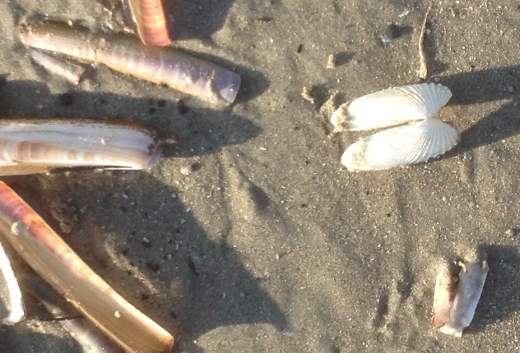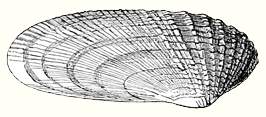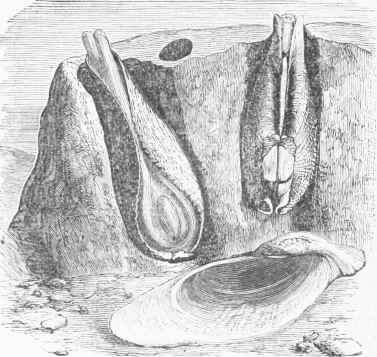American piddock
This is a marine bivalve mollusk that is common in the North sea. It has an elongated white shell, becoming yellow brown when it gets older. The american piddock is a filter feeder that uses a short siphon to inhale seawater and filter out small plankton particles, like algae.

American piddock or false angel wing (right, above) on the North-sea beach.
American piddock is living in a hole
This is a burrowing animal that lives in a tubular burrows made of wood or clay in the seabottom. One of shell's has a set of ridges or "teeth", which they use to grind away in clay, wood or peat. This is done by making a circulair motion with those teeth.

American piddock, false angel wing or Petricola pholadiformis.
always in danger of drowning
The American piddock makes its borrow mostly in peat that is covered with sand. But this animal is always in danger of drowning as it can't leaves its burrow. So if the sand covers this clam , it can't get food or oxygen.
distribution
The American piddock is native to the Eastern Coast of North America including the Gulf of Mexico. Nowadays it can be found from the coast of southern Norway to the Mediterranean and West Africa.
American piddock is an invasive species
It was introduced into the southern parts of the North Sea at the end of the 19th century, together with the American oyster, Crassostrea virginea. It then displaced the indigenous white piddock and oval piddock partly. Nowadays it has become an esthablished species.

The white piddock in its hole.